
Mercedes-Benz B-Class Review 2023

Introduction
Just over a decade ago, Mercedes-Benz ditched the original concept of the A-Class and replaced it with a traditionally shaped family hatchback.
It had always been a small family motor, but for its first two generations, it was shaped more like a people carrier – a concept which changed in 2012 when its new form first arrived.
The revised A-Class was preceded a few years earlier with the introduction of the B-Class, which has retained some compact people-carrier vibes.
Consequently, if you’re looking for a hatchback but want something more spacious, the B-Class is meant to be your go-to alternative if you need more practicality.
Select's rating score* - 3.7 / 5
At A Glance
The third generation B-Class has been around since 2019, and it's recently been given a facelift, upgrading the infotainment system and bringing the front-end design into line with the rest of Mercedes’ range.
Regarding aesthetics, it looks much like the A-Class and is built on the same MFA2 platform. Plus, it’s identical in terms of width and length.
Its body is taller, though. And that should give better accessibility to the rear seats, which helps when you’re seating small children.
The B-Class also has a bigger boot, making loading and unloading goods easier.
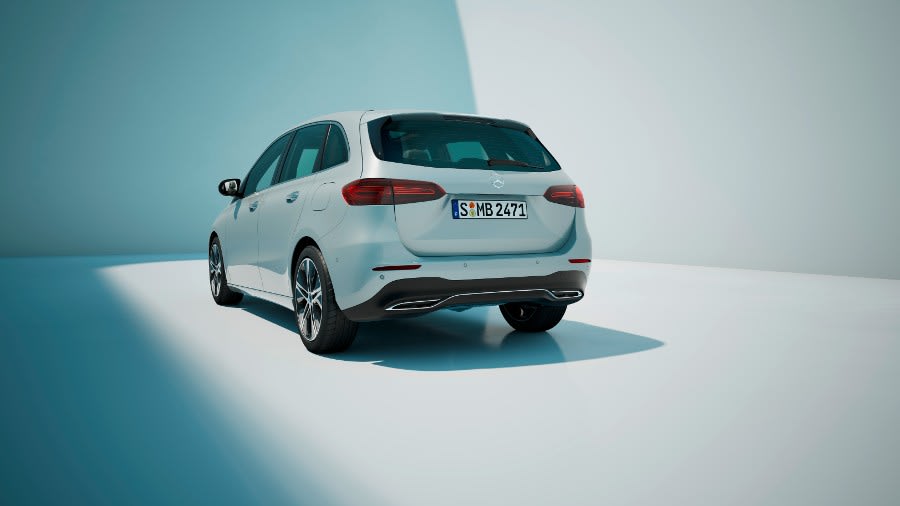
The front now features a ‘star’ mesh grille and a sporty shape, even more so above entry-level, as well as a curved lower grille, along with air intake-shaped cut-outs towards the edges.
Around the side, there's a subtle crease towards the bottom of the doors, which gives the car’s shape more definition. Meanwhile, around the back, it's modest, with a larger and more vertical rear window than the A-Class hatchback.
The B-Class is certainly more function than form. But it’s still an attractive vehicle, and the large Benz badge at the front, plus the chrome strips than run horizontally from it, offer a reminder that you’ve leased a premium product.
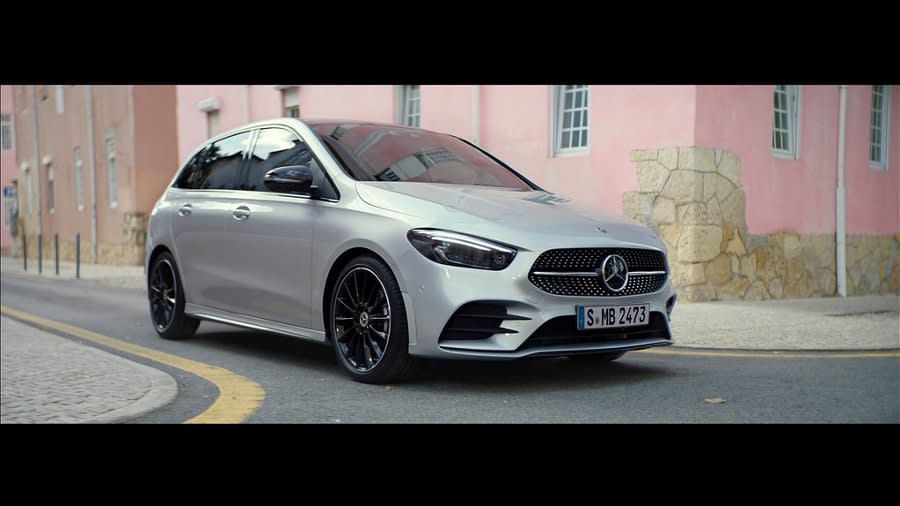
Key Features
Four trim levels are offered, which are more or less identical to the A-Class.
The entry-level is the Sport Executive, which has more modest bodywork, especially at the front, offering 17-inch alloys, a 10.25-inch infotainment touchscreen with Apple CarPlay/Android Auto, SatNav and DAB radio. It also boasts a 10.25-inch digital instrument screen, a wireless phone charger, climate control, 64-colour ambient lighting, heated front seats, keyless-go, and a leather sports steering wheel.
Next up is the AMG Line Executive. This grade gets 18-inch wheels, more athletic AMG body styling, plus stainless-steel sports pedals. It also houses half-leather sports seats and a sportier steering wheel with Nappa leather.
The AMG Line Premium receives illuminated door sills, dual-zone climate control, augmented reality navigation, and an improved sound system.
The flagship AMG Line Premium Plus gets 19-inch alloys. It also vaunts an adaptive high beam, a panoramic sliding sunroof, electrically adjustable front seats with a memory function, and a head-up display. A surround-view camera, as well as the MBUX Interior Assistant, which can detect and respond to gestures, are part of the kit, too.
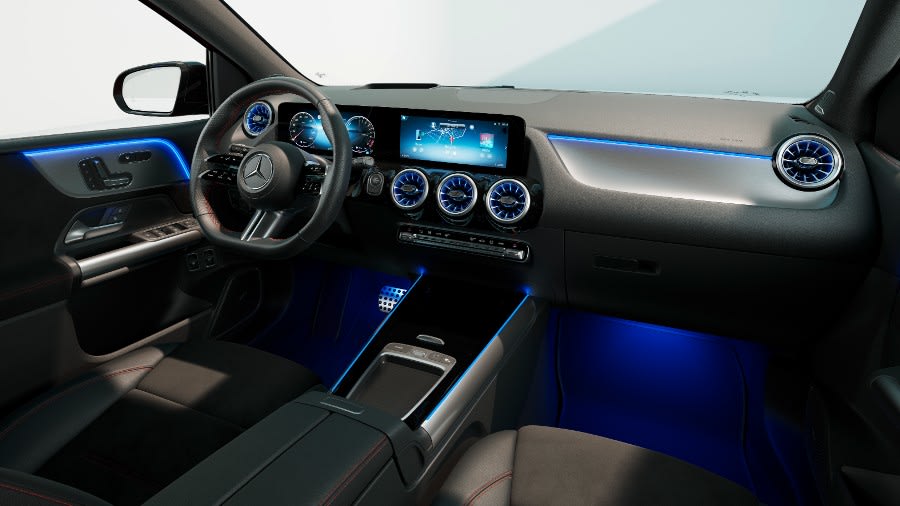
The sibling A-Class, which has also been given a makeover, has two petrol engines and a diesel to choose from nowadays. At the same time, the saloon version offers a plug-in hybrid – a reduction on what was offered before. It is the same story with the B-Class, where the plug-in hybrid has been discontinued.
In addition, its entry-level B180 and higher-powered B250 petrols, plus the higher-powered B220d diesel, have been withdrawn.
The only petrol that’s still obtainable is what was the mid-range B200 – a 1.3-litre four-cylinder with mild hybrid technology. This unit produces 163 PS and is mated to a seven-speed auto gearbox.
Alternatively, there’s the B200d, a 2.0-litre four-cylinder diesel, which supplies 150 PS and comes with an eight-speed automatic ‘box.
The cutbacks are a hint towards Mercedes-Benz closing the books altogether on the A-Class and B-Class. Both are set to be discontinued in 2025 as the German brand heads towards electrification and puts more energy into the luxury end of the market.
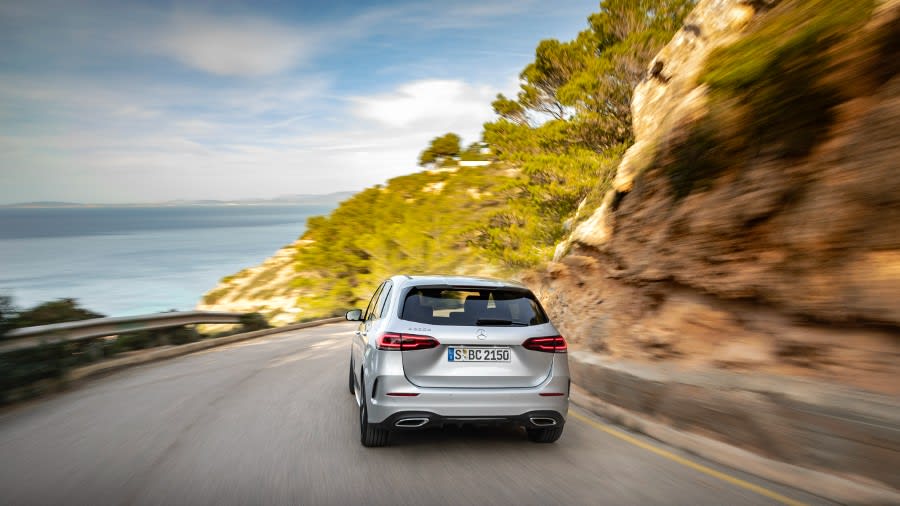
Performance & Drive
The A-Class is hardly a hot hatch (unless you opt for the full-beans AMG version). But it’s nevertheless more likely to be leased by those who want some form of driving thrill.
The B-Class, however, is an even more sensible car, so consumers of this style of vehicle aren’t likely to be the sort of people who want to drive it quickly.
As a result, while on the A-Class, we’d avoid the entry-level A180 engine. We would have recommended the same powerplant – the B180 – on the B-Class, so we're sorry to see it discontinued.
Nevertheless, the B200 petrol that remains has plenty to offer, boasting identical economy figures and more power than the B180.
You may not need the extra grunt it provides over the discontinued variant, but it moves away well and 0-62 mph is dealt with in 8.4 seconds.
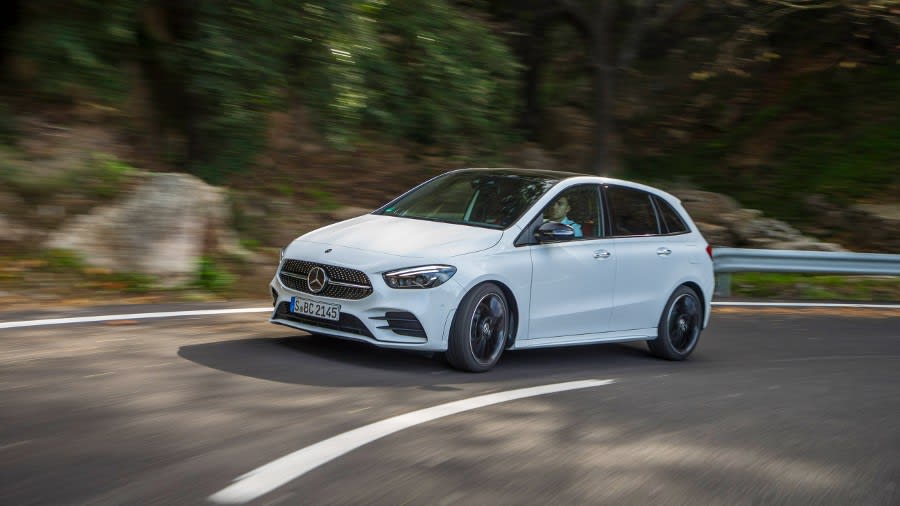
The diesel impresses most, though, with lots of low-end thump helping you accelerate off the line with consistent power delivery. With such similar performance and superior fuel economy, it’s hard to recommend the petrol over it. However, the diesel version is slightly more expensive.
Both are great to drive around town and quick enough to cope with overtaking on motorways where you might need that burst of extra power.
The gear-changes are smooth from the automatic gearbox, although the seven-speed offered in the petrol is better than the eight-speed of the diesel. This is because there's less choice in the petrol, so there's less chance of you being caught in the wrong gear if the car changes up just as you hit the brakes, which causes an unwanted jerk.
That said, you can still get the same in the seven-speed, and you’re not missing out on anything by taking the eight-speed diesel over the seven-speed petrol.
On motorway journeys, the wind noise is damped out well by the car’s soundproofing, and it's generally a quieter experience than rivals can offer.
In terms of ride comfort, Mercedes-Benz has kept the B-Class in line with the A-Class and opted for a more absorbing suspension setup.
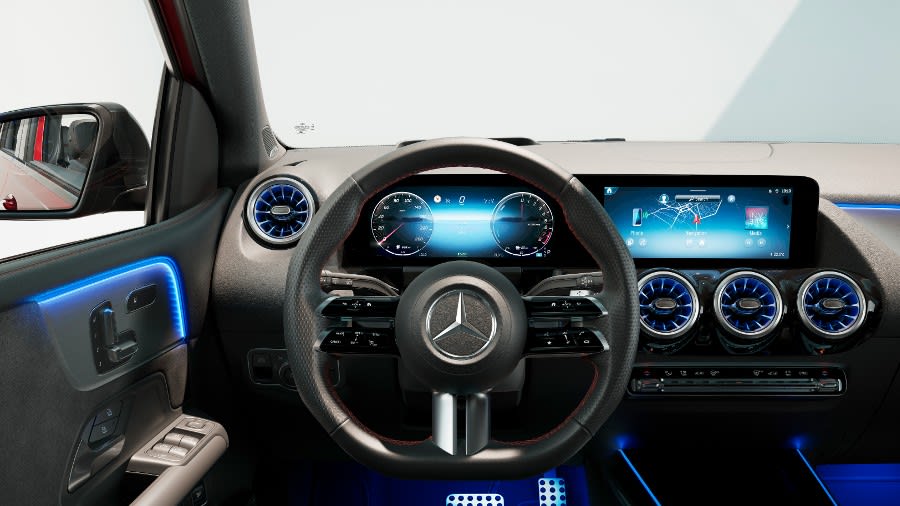
It is very smooth to drive, evening out potholes and imperfections in the road. And, although bumps are more noticeable as you go up the range and get gradually bigger alloys, what's also apparent is that an equivalent BMW is less comfortable.
That said, BMWs are set up more for the thrills of the driving experience. In contrast, Merc, although not shy about producing racier cars itself, tends to aim its more modest offerings at those who prioritise a relaxing vehicle to drive.
Despite the AMG-themed trims and sportier bodywork, the B-Class is set up for smoothness over cornering prowess.
As a result, it isn't as nimble or engaging to drive as a BMW, but Mercedes' engineers have done a great job at retaining good handling.
Even though the B-Class is quite tall, it doesn’t lean as much as you’d imagine around faster bends.
We would hardly call it agile, but the body roll is very well controlled and, with lots of grip and superbly weighted steering, which firms up nicely in the bends, it's still adept at taking corners.
It is not a car we'd be choosing if entertainment was the priority, but it's still much more fun to drive than we’d expected.
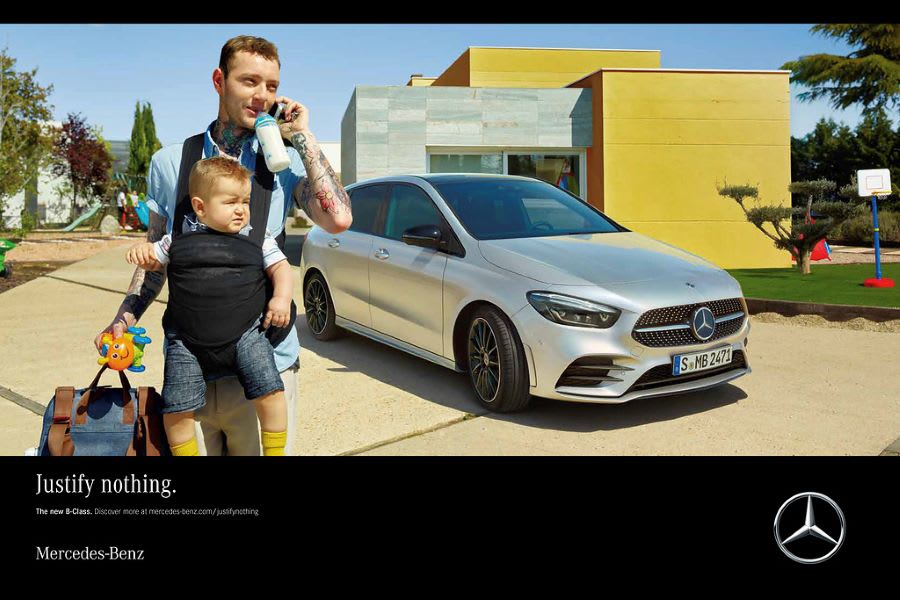
Running Costs & Emissions
The B200 petrol manages 43.5 to 46.3 mpg depending on the trim, producing 138 g/km of CO2.
The B200d, on the other hand, offers even better economy figures of 51.4 to 55.4 mpg while emitting 135 g/km of CO2.
Neither is likely to be on the radar of company car users, though, as the tax advantages of electrified cars make choosing anything but an all-electric or plug-in hybrid an unnecessarily expensive choice nowadays.
The PHEV might have been a contender, but, as we said earlier, it's no longer available, and even on the A-Class, it's only offered now on the saloon version.
In terms of reliability, Mercedes-Benz isn't fairing exceptionally well nowadays, along with Audi and BMW, with East Asian cars dominating the top of the league tables.
Interior & Technology
Mercedes-Benz has worked on its interior, and once you see inside the car, you'll probably be sold on the B-Class. It is stunning.
Whereas many brands will save the best for its more luxurious models, Mercedes has spared nothing in making the B-Class's cabin as good as possible.
It looks fantastic, especially when it’s lit up with ambient lighting (of which there are 64 colours to select).
The jet-engine style air vents also add a sense of occasion, and the attractive steering wheel looks inviting to hold, especially in the AMG-branded grades.
There are many plush, soft-to-the-touch materials, and the two 10.25-inch screens sit next to each other in a single unit, like one ultra-wide monitor, on the dashboard.
Splashes of silver here and there, including on the steering wheel and air vents and the centre console and interior door handles, brighten things up, along with an odd dollop of shiny piano black.
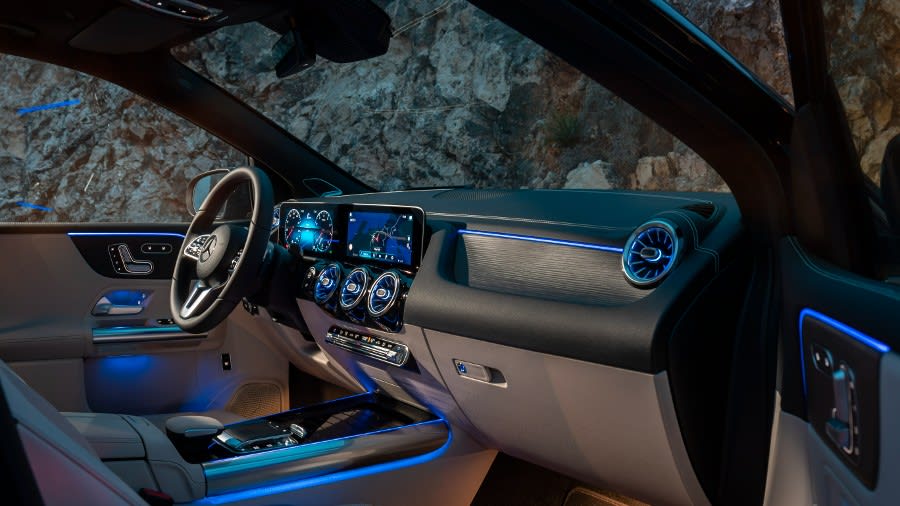
The MBUX infotainment system is crisp, clear, and intuitive to use. Of course, it still needs to match BMW's tech, but that's the best you can get in any car, and Mercedes' system is giving it a good run for its money nowadays.
Merc’s system loses points because you have to control it via a touchpad, which can be fiddly to use, but you do get used to it.
Nevertheless, a rotary dial would be preferable, although it can be controlled by voice commands, which works quite well apart from the odd slip-up.
You can even control it via hand gestures in the top-of-the-range version too.
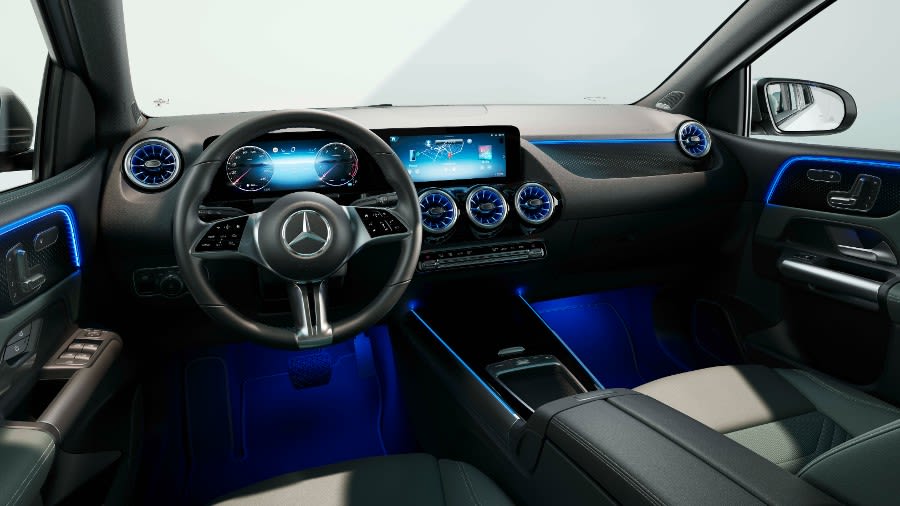
Practicality & Boot Space
Finding a comfortable driving position in the B-Class is easy as there's a lot of travel in the seats and steering wheel.
Higher-end models come with electric seat adjustment in the front, too, which makes things even more convenient.
The driving position is also noticeably higher up, even though only slightly, compared with the A-Class. This aids front visibility, helped by the pillars being kept as thin as possible.
Out of the rear, it could be better, but then the more vertical shape to the back means the pillars are less diagonal than on the A-Class, which helps. Besides, all models come with a reversing camera as standard. This is upgraded to a 360-degree camera in the AMG Line Premium Plus trim.
There is a lot of space in the front, too, so you won't feel like you're rubbing shoulders with a front-seat passenger, and headroom isn't an issue.
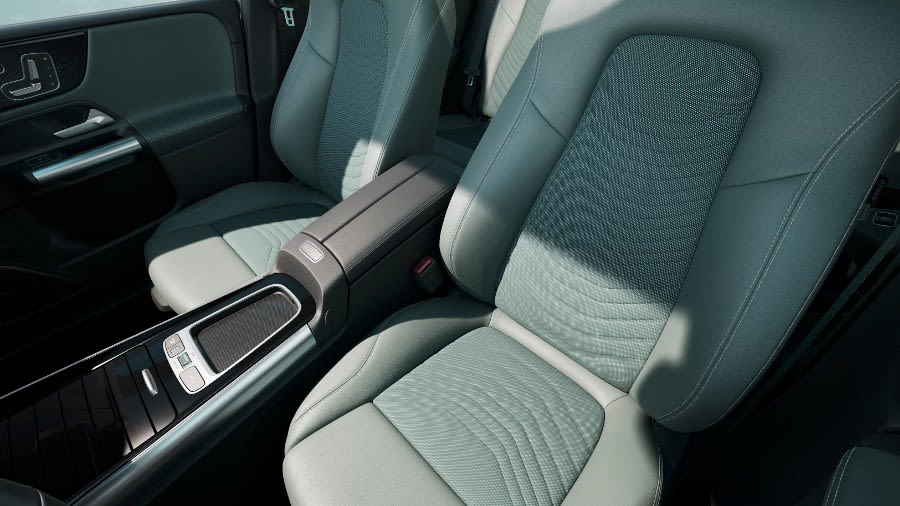
And, because the roof is higher and retains more of its height towards the back with only a very slight slope, there’s lots of headroom in the rear. Furthermore, there’s no shortage of legroom, helped by the ability to recline the back seats.
The middle seat has something of a hump in it, so fitting three adults in the rear isn't likely to be comfy for long journeys. But it's more doable than in most family hatchbacks.
The taller rear-end compared with the A-Class means that the B-Class has a larger boot, offering 420 litres in the petrol and 445 litres in the diesel. This increases to 1,505 litres in the petrol and 1,530 litres in the diesel if you put the rear seats down, which fold away in a useful 40:20:40 split.

Even better is the flat boot floor and the lack of a load lip in the entrance, which, unlike the A-Class, makes sliding larger or heavier items in and out far simpler.
One place where it does lose points is that it’s only a five-seater, whereas one of its rivals, the Volkswagen Touran, offers a seven-seater version.
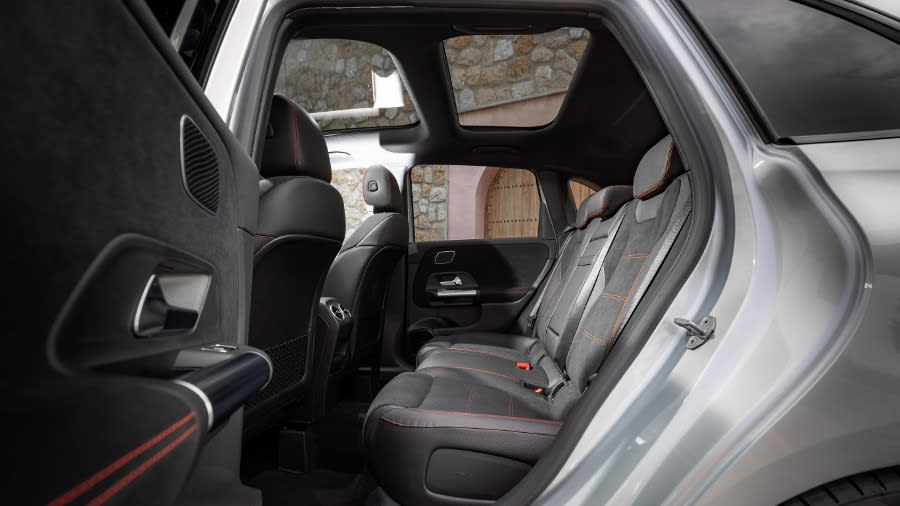
Safety
The Mercedes-Benz B-Class earned a five-star rating after being put through its paces by crash-testing experts Euro NCAP.
It earned a massive 96% score for adult occupants, 90% for children and 75% for safety assists.
Automatic emergency braking is included across the range as standard, as is a driver attention monitor, lane-keeping assist, and a 180-degree camera.
The AMG Line Premium and above get exit warning assist and blind spot assist, while the top-of-the-range AMG Line Premium Plus gets a 360-degree camera, as we mentioned earlier.
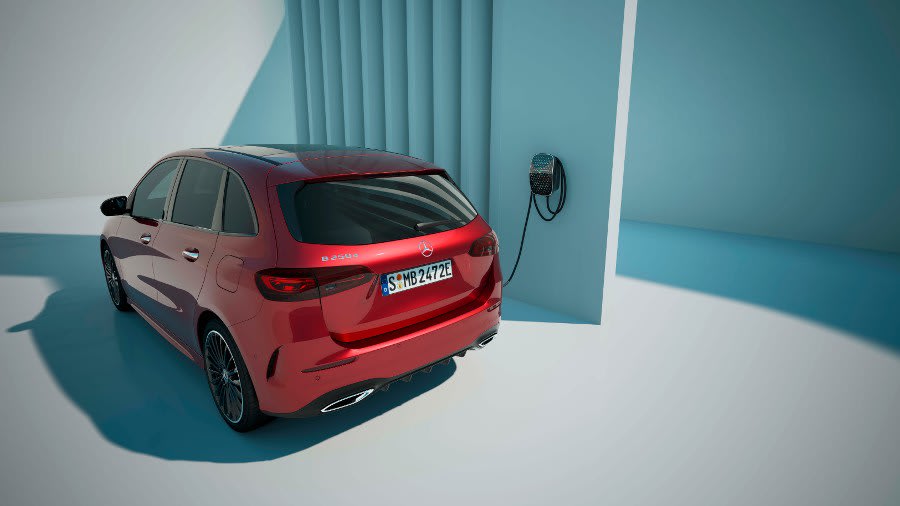
Options
There is not much on the options list these days, although the entry-level Sport Executive trim comes with black leather upholstery as standard. But you can choose to have creamy beige at no extra cost if you prefer.
You can also opt for a darker 'macchiato' beige shade, but this option is only available to you if you select grey or metallic black for the exterior colour.
Speaking of which, the standard paint colours are solid black or white, while the metallic colours, including grey, black, white, denim blue, silver, rose gold and red, cost several hundred pounds more.
Matte grey paint is also offered, but with a four-figure asking price, it's far too expensive to recommend, however good it might look.
A handful of accessories are also offered, including car seats and crates for the boot.
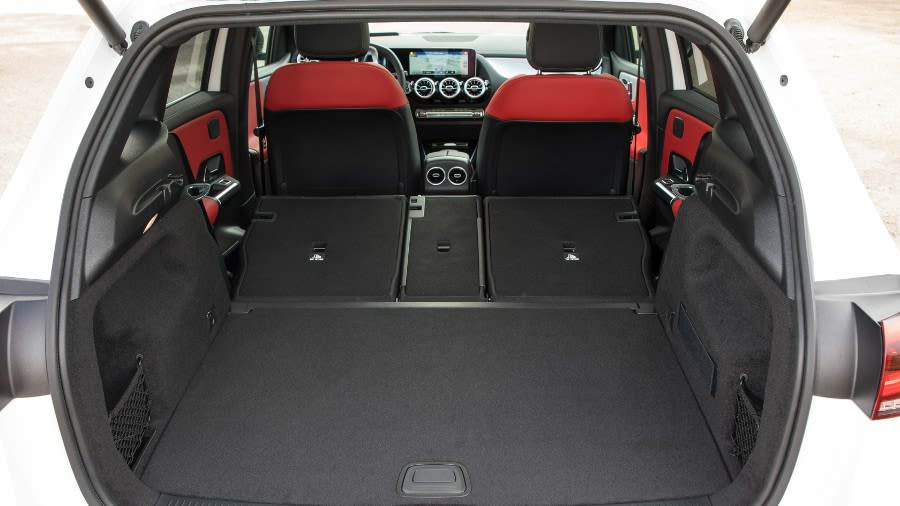
Rival Cars
The most apparent rival to the B-Class is the BMW 2 Series Active Tourer.
It offers an arguably better driving experience and is well-equipped, providing competition at the higher end of the market.
Audi doesn't offer an equivalent model. Still, if practicality is on your priority list, then its range of smaller SUVs, such as the Q2 or Q3, might be worth looking at, especially as both are considerably cheaper.
Sadly, two of the best alternatives, the Ford C-Max and the Volkswagen Golf SV, have been discontinued.
This reflects the sign of the times as manufacturers turn their attention to producing electric models and, of course, the surging popularity of SUV crossovers like Audi’s Q-range.
Speaking of crossovers, a Volvo XC40 is similarly priced to the B-Class.
The VW Touran is worth a look, too, especially if you occasionally need a couple of extra seats over the standard five.
Verdict & Next Steps
The B-Class may be representing a dying market, but that doesn’t do it justice.
It is smart, good to drive, superbly practical and comfortable, boasting an interior that wouldn’t look out of place at the ultra-luxurious end of Merc’s range.
The engines aren’t anything special, but they’re more than up to the job, while the Mercedes-Benz comes well-equipped as standard.
But it's costly for a family hatchback, and, despite all the plus points, you might question the B-Class's value for money.
There are cheaper leasing alternatives out there, given the ever-growing popularity of SUV crossovers.
Where to next?
View our latest Mercedes Benz B Class lease deals, call us to find out more**.
Call us on 0118 3048 688 or hit the green 'Enquire' button for more details.
Looking for a great leasing deal? Check out our incredible range of car lease deals
New coupe? Read our latest Car Reviews and find the right model for you
Want to know more about leasing? Take a look at our comprehensive Leasing Guides
Interested in everything motoring? Why not catch up on all the latest Car Leasing News.
*Score based on Select’s unique meta score analysis, taking into account the UK’s top five leading independent car website reviews of the Mercedes B-Class.
**Prices include VAT. Credit is Subject to Status, Ts and Cs and Arrangement Fees apply. Excess mileage may apply. Stock levels and prices correct as of 25/04/23.





















